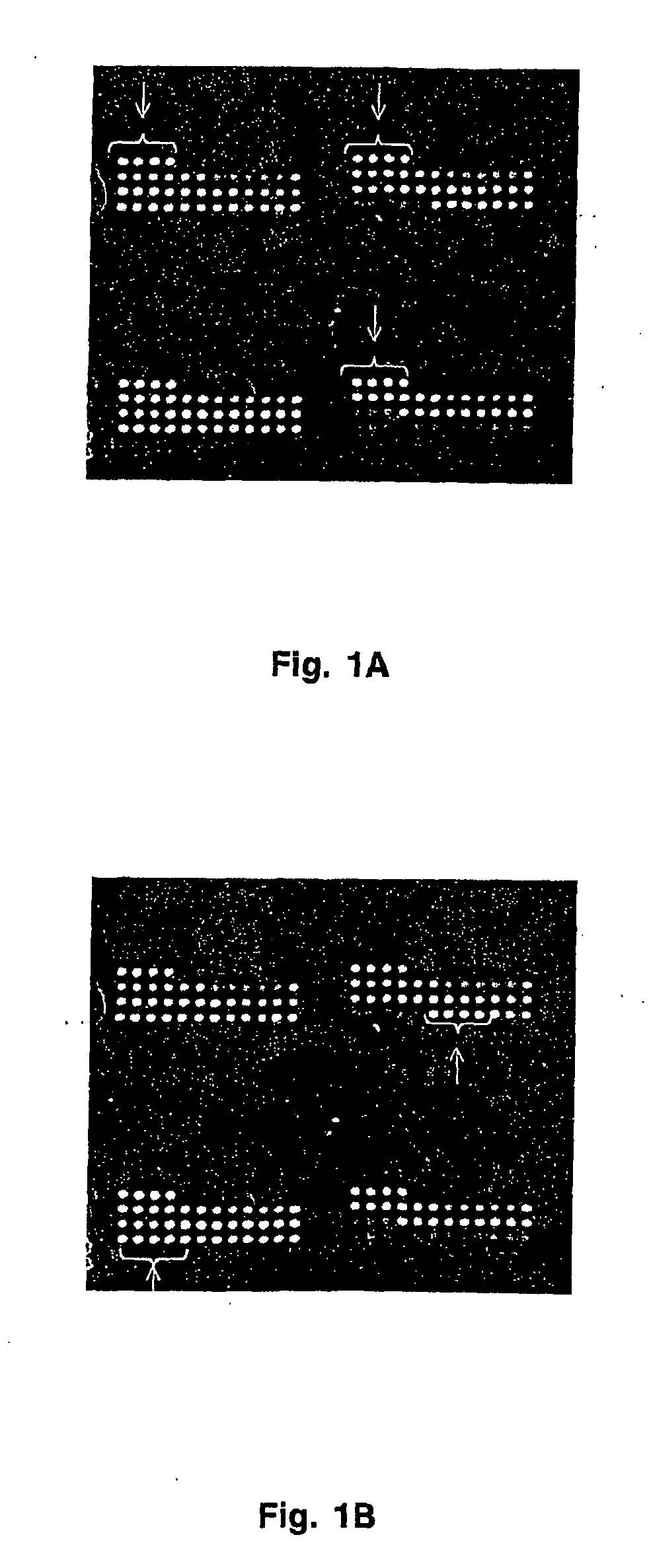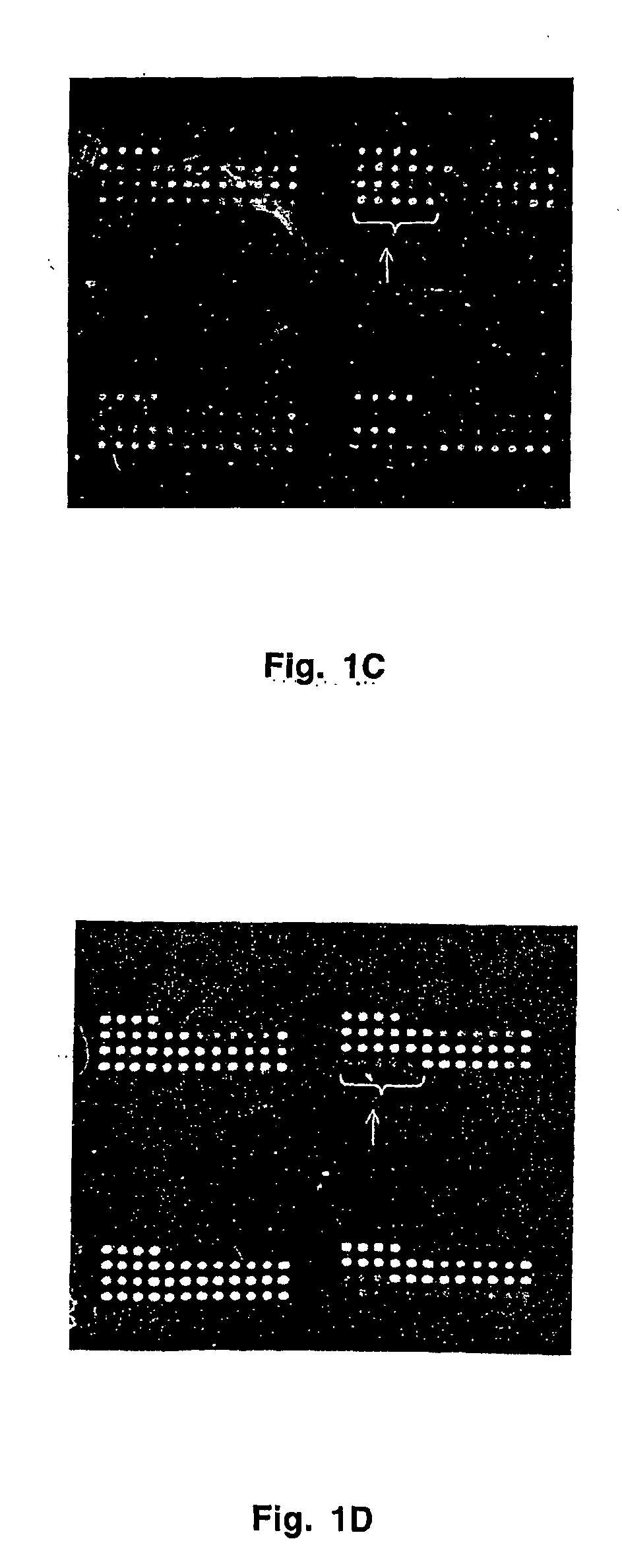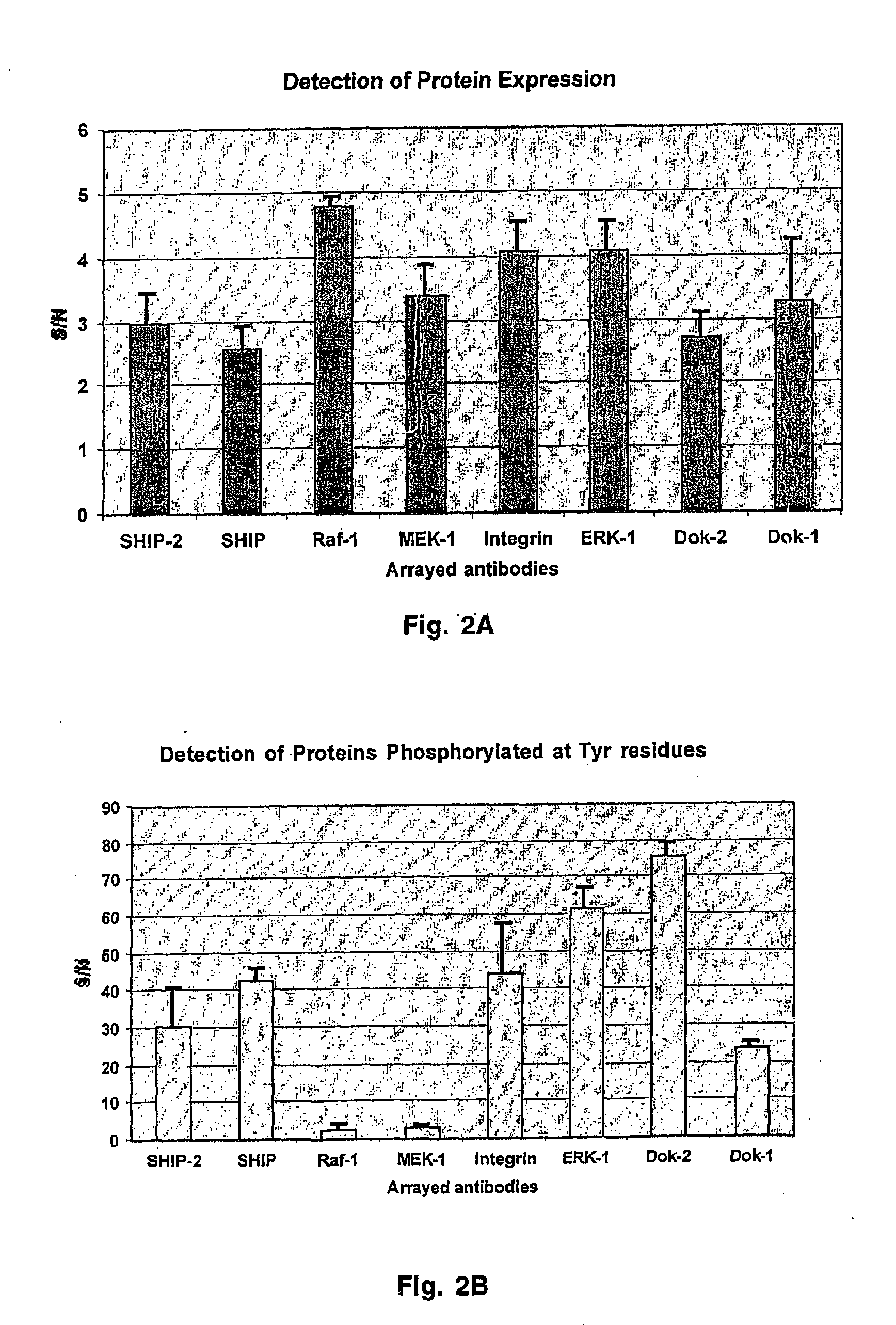Protein micro-arrays and multi-layered affinity interaction detection
a protein microarray and affinity interaction technology, applied in the field of proteomics, can solve the problems of many technical and practical problems that remain unsolved, the 2d-page/ms-id approach is either very poorly addressed, or not at all addressed by the 2d-page/ms-id approach, and achieves high throughput, high throughput and quantitative analysis.
- Summary
- Abstract
- Description
- Claims
- Application Information
AI Technical Summary
Benefits of technology
Problems solved by technology
Method used
Image
Examples
example 1
Fabrication of Microarrays
[0054] Antibodies were printed on HydroGel slides (Perkin Elmer Life Sciences) using MicroSpot 2500 pins and a MicroGrid II arrayer (BioRobotocs). Printing ink was PBS containing 0.2% gelatin and 0.1% sodium azide. Printing concentration of each antibody was 200 μg / mL. Each antibody was spotted onto the array at least 5 times. The spacing between spots was 300 microns. Quality control of antibody deposition was performed using Cy5-labeled non-specific antibody. Quality control of retention of antibodies was performed using deposition of mouse IgG which was detected at the completion of experiments with Cy5-labeled goat anti-mouse antibody.
[0055] After completion of a printing cycle, arrays were incubated in the dark at room temperature and 65% relative humidity for at least 48 hrs. They were washed with PBST (PBS supplemented with 0.01 to 0.1% tween-20) for 30 min 3 times on an orbital shaker. Finally they were dipped in PBS, centrifuged at 1,000 rpm for...
example 2
Preparation of Protein Extract
[0056] Human leukemia cells, R10+ (glucophorin A positive), were grown in IMDM medium supplemented with 20% (v / v) heat inactivated fetal bovine serum and a penicillin-streptomycin mixture at 37° C. in 5% CO2. Cells were collected and washed 4 times with ice-cold PBS without calcium and magnesium. The extraction buffer typically was carbonate buffer (pH 6.0 to 9.6) supplemented with EDTA (1 μM to 10 mM), IGEPAL (0.1 to 5%), NaF (1 μM to 10 mM), and Na3VO4 (1 μM to 10 mM). Ice-cold extraction buffer was added to cells. Proteins were extracted for 15 min on a rocking platform at 4° C. Cell debris was removed by centrifugation at 15,000 g for 30 min at 4° C. Protein content in the extract was determined using micro BCA reagent kit (Pierce).
example 3
Labeling of Cellular Proteins with Fluorescent Tag
[0057] In a typical experiment, 2.6 mL of protein extract (protein concentration 0.1 to 0.5 mg / mL) was labeled with Cy5 fluorescent dye. NHS-ester activated Cy-dyes were from Amersham Biosciences. The dye (200 nmoles) was dissolved in a total volume of protein extract to be labeled and incubated in the dark at room temperature and gentle rocking for 30 minutes. Separation of non-incorporated dye was performed by gel-filtration on a Sephadex G-25 column (Amersham Biosciences) that was previously equilibrated with PBST. An equal volume of non-labeled protein extract was also applied to a G-25 column to exchange the buffer for incubation with arrays.
PUM
| Property | Measurement | Unit |
|---|---|---|
| concentration | aaaaa | aaaaa |
| v/v | aaaaa | aaaaa |
| pH | aaaaa | aaaaa |
Abstract
Description
Claims
Application Information
 Login to View More
Login to View More - R&D
- Intellectual Property
- Life Sciences
- Materials
- Tech Scout
- Unparalleled Data Quality
- Higher Quality Content
- 60% Fewer Hallucinations
Browse by: Latest US Patents, China's latest patents, Technical Efficacy Thesaurus, Application Domain, Technology Topic, Popular Technical Reports.
© 2025 PatSnap. All rights reserved.Legal|Privacy policy|Modern Slavery Act Transparency Statement|Sitemap|About US| Contact US: help@patsnap.com



